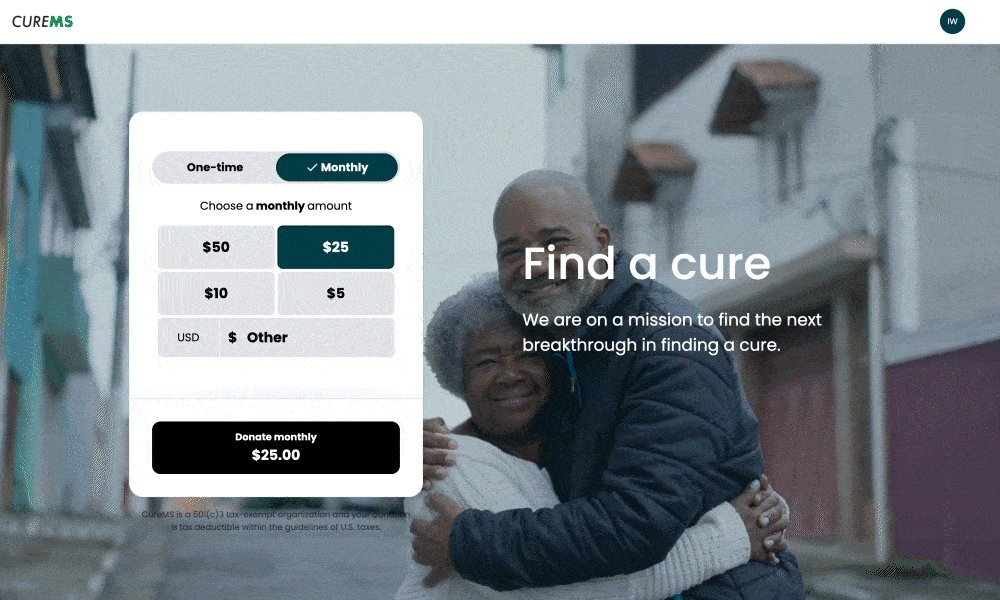How to Create a Donation Tax Receipt

When you purchase an item from a store, the business provides you with a receipt. Similarly, when donors give to a nonprofit, they expect a donation tax receipt. These receipts play crucial roles for supporters and nonprofit organizations alike.
Clear and consistent nonprofit donation receipts help build trust with your donors. They confirm that the donation amount was correctly and securely processed while reiterating the importance of your cause and the donor’s support. Donor receipts also offer substantiation for supporters when tracking potential deductions for their end-of-the-year income tax return.
Meanwhile, sending donation tax receipts helps keep your nonprofit’s bookkeeping organized and creates greater financial transparency. Plus, your nonprofit must send donation receipts to maintain its status as a tax-exempt organization.
Streamlining donation receipts helps your nonprofit spend less time on financial admin tasks and more on donor engagement and your mission. That’s why we’ve created this step-by-step guide on everything you need to know about creating a donation receipt letter for tax purposes.
What is a donation tax receipt?
A donation receipt is a written acknowledgment of a donor’s contribution to a charitable organization. It helps supporters and nonprofits keep good records of gifts and offers an opportunity for nonprofits to express their appreciation.
5 types of donation receipts
While every donation receipt serves the same purpose, there are a few formats you might send based on the donation type, such as cash donations versus donated items. These are the five main donation tax receipt categories:
- Monetary donation receipts: This receipt acknowledges cash contributions donated by credit card, PayPal, or another preferred payment method.
- In-kind donation receipts: This receipt documents the value of the goods or services—noncash donations—that a supporter gifts to your nonprofit.
- Quid pro quo donation receipts: This receipt reflects goods or services your nonprofit provides in exchange for a donation. For example, supporters may receive meals and drinks in exchange for nonprofit event registration fees, or an attendee may receive a silent auction item in exchange for donating the highest bid.
- Stock donation receipts: This receipt details when a supporter donates stock shares of a company to your nonprofit, including the corporation’s name and the number of shares.
- End-of-year donation receipts: This receipt (also called a year-end giving statement) totals every gift a supporter donated to your nonprofit throughout the year. It helps taxpayers determine potential tax deductions on their annual filings.
When is a nonprofit donation tax receipt required?
The Internal Revenue Service (IRS) has specific legal requirements for when to send donation tax receipts. Always check the IRS website for the latest nonprofit requirements. In general, these scenarios include:
- When a donor’s charitable contributions are $250 or more
- When a donor receives goods or services for donations greater than $75
- When a donor specifically requests a receipt for their donation amount
These requirements apply to all donations, regardless of whether a supporter provided their gift in cash, stocks, or in-kind support. Failing to send donation receipts in these instances can cost your nonprofit a penalty of $10 per donation and up to $5,000 for a single fundraising campaign.
While these five situations require charitable donation receipts, it’s best practice to send them for all donor contributions. Following this process keeps your nonprofit organized and ensures ongoing compliance. Plus, you don’t have to print these receipts—you can share and store them electronically.
How do I write a nonprofit donation tax receipt?
Your donation receipt can be a mailed thank-you letter or an emailed acknowledgment. Select a process that works best for your nonprofit. For example, you may consider emailing receipts for individual donations throughout the year, and then mailing supporters an end-of-year thank-you message with a donation receipt totaling their contributions from the year.
When writing donation tax receipts, customize them to continue telling your nonprofit’s story. Keep these four steps in mind during the process:
- Keep the formatting simple: The goal of donation tax receipts is straightforward, so your formatting should be too. Have a professional design, but prioritize the content.
- Include your branding: Donation tax receipts benefit from clear nonprofit branding, so include your logo and other brand elements to remind people of your mission.
- Thank donors for their contribution: Donors should know how much they mean to your organization, so take this opportunity to show them your appreciation. Include a brief paragraph explaining how the supporter’s donation will impact your work.
- Automate the process: Strong nonprofit fundraising software can send electronic receipts instantly, saving you time and printing costs.
How to create tax-compliant donation receipts
While nonprofits can style their donation receipts differently, there are legal requirements for specific elements to be included. You should always have the following information on your donation receipts:
- Name of the organization
- Donor’s name
- Date of the donation
- Amount of cash contribution or fair market value of in-kind goods and services
- Organization’s 501(c)(3) status
- Acknowledgment that donors didn’t receive any goods or services for the donation (when applicable)
- Estimate of goods and services exchanged (when applicable)
Note: Religious organizations don’t have to describe or assign value to intangible religious benefits.
Those are the basics, but you can take your receipts to the next level by adding a few other elements. Here are some ideas to get started:
- Organization’s EIN or ID number
- Contact information (such as website, phone number, and address)
- Short message of appreciation
- Executive director’s signature
Donation tax receipt FAQs
The IRS should always be your number one source of information for the latest requirements on donation receipts, but here are a few answers to frequently asked questions.
1. Does the IRS check donation receipts?
Yes. The IRS may not check every donation receipt, but it’s best to operate as if it does. You want to be ready if the IRS decides to check your records.
Incomplete records could mean disqualification of your tax-exempt status. You don’t want to cause any frustration for your donors over a preventable mistake.
2. Can you use a donation receipt template?
Yes. First, craft your donation receipt outline with all the legal requirements included. Then, customize this basic template based on donation type, such as noncash contributions or monetary support. Be sure to review your donation receipt templates annually to make any necessary updates.
3. Do you need to send recurring donors monthly donation receipts?
No. As long as you send a recurring donor an end-of-year donation receipt with the total amount of their gifts from that year, you don’t need to send them a monthly receipt. However, this doesn’t mean you shouldn’t. Ask your donor if they’d prefer to receive the monthly receipt in addition to your year-end statement.
If you don’t send monthly receipts, plan to send an initial thank-you receipt at the start of a donor’s participation in recurring giving and each anniversary afterward. Share how much you appreciate their ongoing support and that, while they shouldn’t expect a monthly receipt for their recurring donations, they can expect monthly updates about your work.
Send donation tax receipts to protect your nonprofit eligibility and strengthen donor relationships
Donation receipts are a crucial part of your nonprofit’s operations. These communications help with donor retention through heightened donor trust and support your organization’s recordkeeping. Whether following a gift to a peer-to-peer fundraising campaign or a year-end donation, ensure your supporters receive a donation tax receipt to maintain the highest level of transparency and make their lives easier.
GoFundMe Pro makes this process easy. Once supporters submit their gift via a GoFundMe Pro donation form, they receive an automated email with their donation information and a thank-you for their support. You can customize the appearance and messaging of your donation tax receipts using GoFundMe Pro’s content blocks and other email features. This frees up your time to keep doing the powerful work donors want to see.
Copy Editor: Ayanna Julien

See GoFundMe Pro in action



